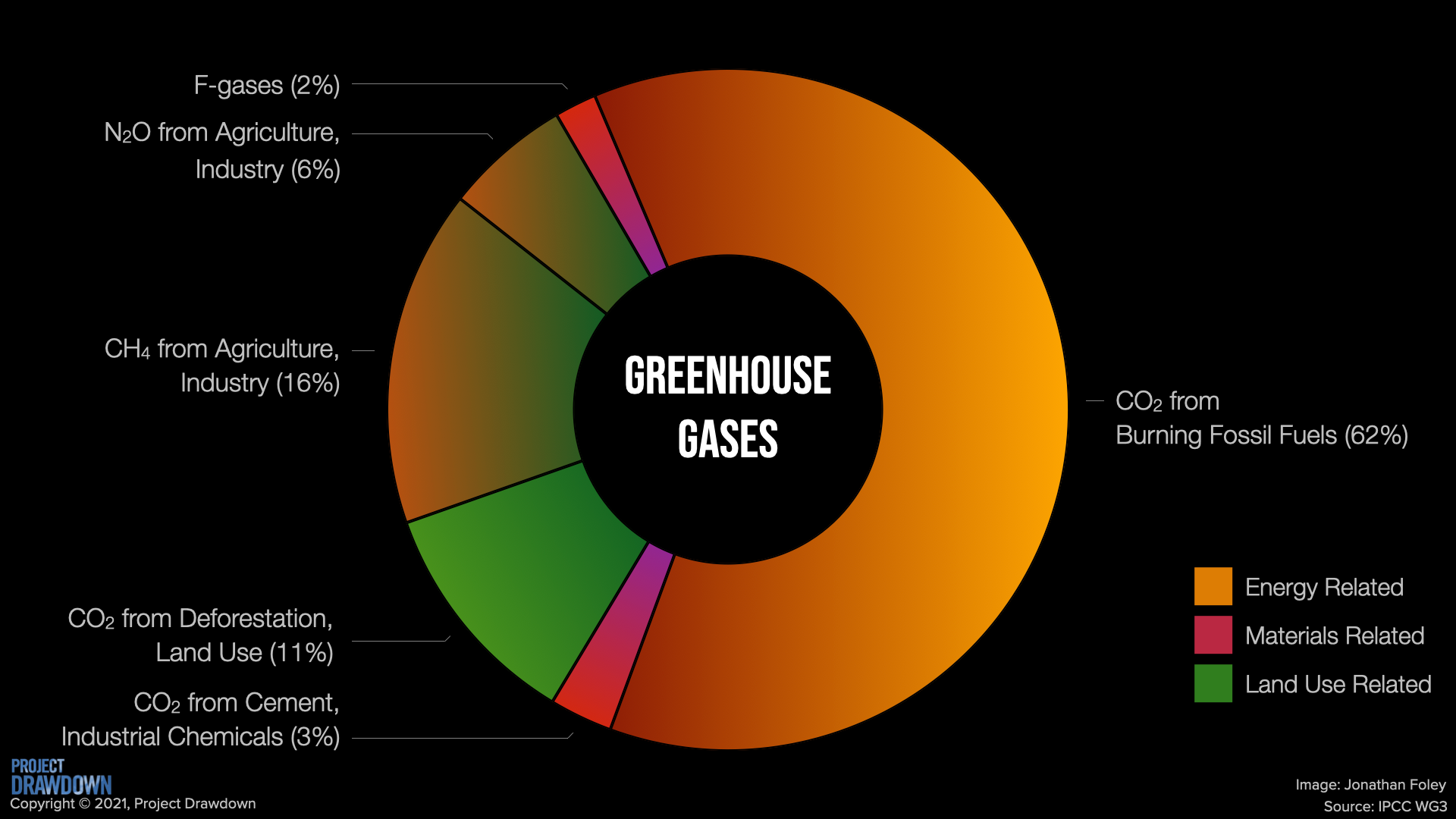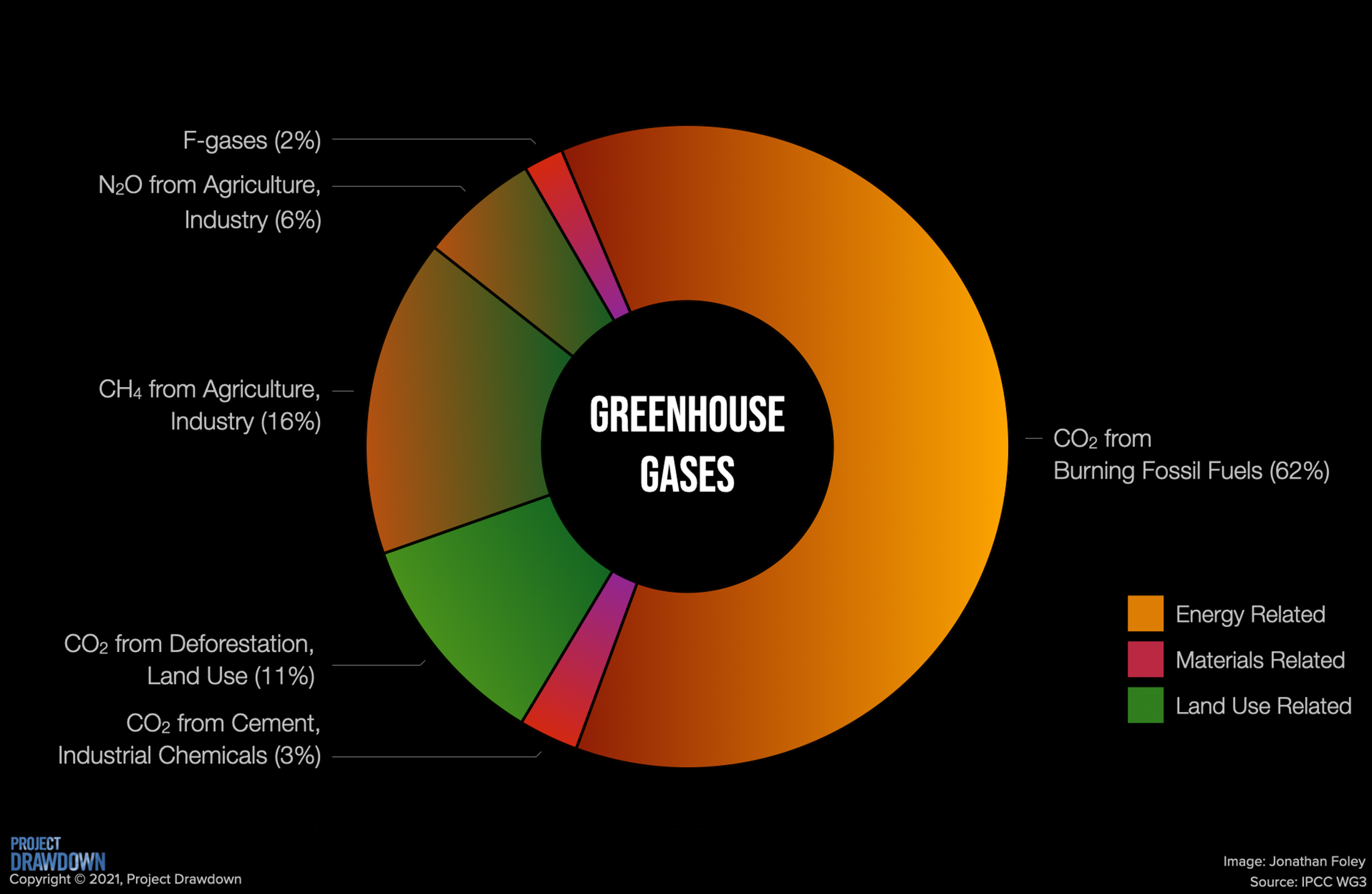Almost all of my writing for Tumbleweird on climate change has focused on carbon dioxide, as it comprises 77% of global greenhouse gas emissions from human activity.
Although emissions of methane from human activity are far smaller than carbon dioxide, methane is 28 times more potent as a greenhouse gas, so methane is estimated to contribute 14% to the forcing of global warming. Moreover, the lifetime of methane in the climate system is much shorter than carbon dioxide, so its concentration in the atmosphere responds much faster to changes in its emissions. Since the methane concentration has tripled since 1850, it should be possible to reduce its concentration three-fold by reducing its emissions to pre-industrial levels. We can therefore reduce the radiative forcing of global warming by 14% within decades if we can eliminate methane emissions from human activity.

But can we? As for carbon dioxide, it won’t be easy. While most carbon dioxide emissions result from the use of the dominant source of energy powering our civilization, methane emissions arise from a variety of sources, some of which will be challenging to eliminate.
The easiest to reduce are methane leaks from oil and gas wells and the pipelines that distribute those fuels. The leaks, comprising 6% of global greenhouse gas emissions can be easily identified with remote sensing. While some of those leaks are minor and are not worth plugging, most of the leaks are deliberate venting of gas from wells when extraction exceeds demand or the capacity to capture and distribute it. Thanks to the Inflation Reduction Act, there is now both a U.S. price on those methane leaks and funding to pay for capping those leaks. Internationally, the U.S. is assisting other countries to burn the leaking methane, to reduce the climate forcing from that of methane to that of carbon dioxide.
Methane leaks from coal mines are also an important emission source. While methane leaking from mines can be captured, economic incentives are needed for it to happen.
More challenging to reduce are emissions from ruminants such as cattle and sheep. Methane is emitted from burping, farting, and from manure. Emissions from manure can be reduced by adding methane digesting worms to manure. Emissions from burping and farting can be substantially reduced by adding small amounts of a species of seaweed to feed. Given the magnitude of beef, lamb, and dairy production, it is unlikely that sufficient seaweed is available to make a global difference. But the active ingredient in the seaweed has been identified, so synthetic production will follow. However, that ingredient is known to deplete ozone in the stratosphere, so that is a problem.
If these problems cannot be overcome, emissions can also be reduced through reductions in consumption of beef, lamb, and dairy. Plant-based substitutes such as Beyond Beef, Impossible Burger, and soy, almond, and oat milks/cheeses are remarkably similar in taste, texture, and nutritional content.
Rice paddies are responsible for 1% of global methane emissions. The emissions arise from microbes in the paddies. But rice doesn’t have to be grown in paddies. Hybrids that grow better in dry soil are being developed.
Not all methane emissions are directly from human activities. Historically, natural emissions have been balanced by methane removal by oxidation in the atmosphere. However, there is abundant evidence from ice cores that methane concentrations have changed substantially over the last million years, which suggests that emissions have responded to climate change during the ice age cycles. Climate scientists are therefore concerned that as the climate warms, natural methane emissions from soils and from methane deposits in the deep ocean will increase. It is therefore imperative that global warming be limited to avoid runaway methane-climate feedback.
Climate Scientist Steve Ghan leads the Tri-Cities Chapter of Citizens Climate Lobby.


